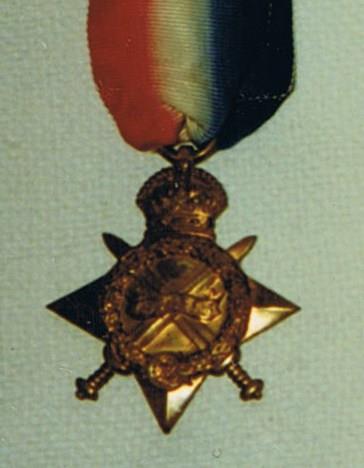This post is dedicated to Maurice Harrison.
It comes courtesy of his great grand nephew, Gary Patton and fellow Harrison family researchers.
Thanks Gary for allowing me to share this information. Maurice’s relationship to me is first cousin 3 x removed.
He was born at Euroa, Victoria on the 5th of August 1882 the third son of George Harrison and Ann Ansell, the fifth of their 12 children.

Lance Corporal Maurice Richard “Mod” HARRISON – No. 1952 14th Battalion A.I.F. Awarded the Military Medal for conspicuous bravery & devotion to duty.
Birth 5 Aug 1882 in Euroa, Victoria, Australia
Death 22 Oct 1918 in Le Havre, Manche, Basse-Normandie, France
Hopefully, the following will give you an insight into what Maurice and his mates went through. Remember he received the Military Medal for his actions throughout all this.
The following notation is courtesy of the Australians on the Western Front 1914–1918 An Australian journey across the First World War battlefields of France and Belgium
During the night of 25–26 September the men of the assaulting battalions reached taped lines laid across the southwestern third of the blasted tree stumps of Polygon Wood. At this point it was vital not to alert the watching Germans by unusual noise or the lighting of cigarettes which would bring down an enemy artillery barrage. At 5.50 am on 26 September the guns opened up in front of the Australian infantry who immediately moved forward behind its protecting wall of shells. If one had been on the Butte, where the Fifth Division Memorial now stands, the sound of battle would have been overpowering. Captain Alexander Ellis, wrote a vivid description of the scene:
Our artillery opened in a single magnificent crash and thousands of shells screamed through the air and burst in a long, straight line of flame and destruction about 200 yards [180 metres] ahead of the waiting infantry … the 4,000 men of the six attacking battalions dashed forward at a run. Somewhere behind the line of destruction lay their victims, shuddering in their pill–boxes, staggered by the sudden commotion, dazed by the concussion of the shells … then, slowly, very slowly it [the barrage] crept forward. A long line of skirmishers disengaged itself from the dense mass of men and followed the advancing screen of shells … Above their heads thousands of machine gun bullets cut the air as they whistled shrilly past on their destined way, and the strident din of many Vickers guns throbbed through the troubled morning air. But these were but the tinkling wood–wind notes in the hell’s orchestra that played about them. For the deafening crash of the rapid firing 18–pounders, the hoarser roar of the scores of heavy guns behind them and the stupefying concussion of shrapnel and high explosive shells in the barrage in front were by now all mingled in the hideous rhythmical clamour of the perfect drum–fire barrage. Thus, at 5.50 a.m. on the 26 September 1917, was the Division launched into the Battle of Polygon Wood.
Captain Alexander Ellis, The Story of the Fifth Australian Division, London, 1919, pp.244–5






No comments:
Post a Comment